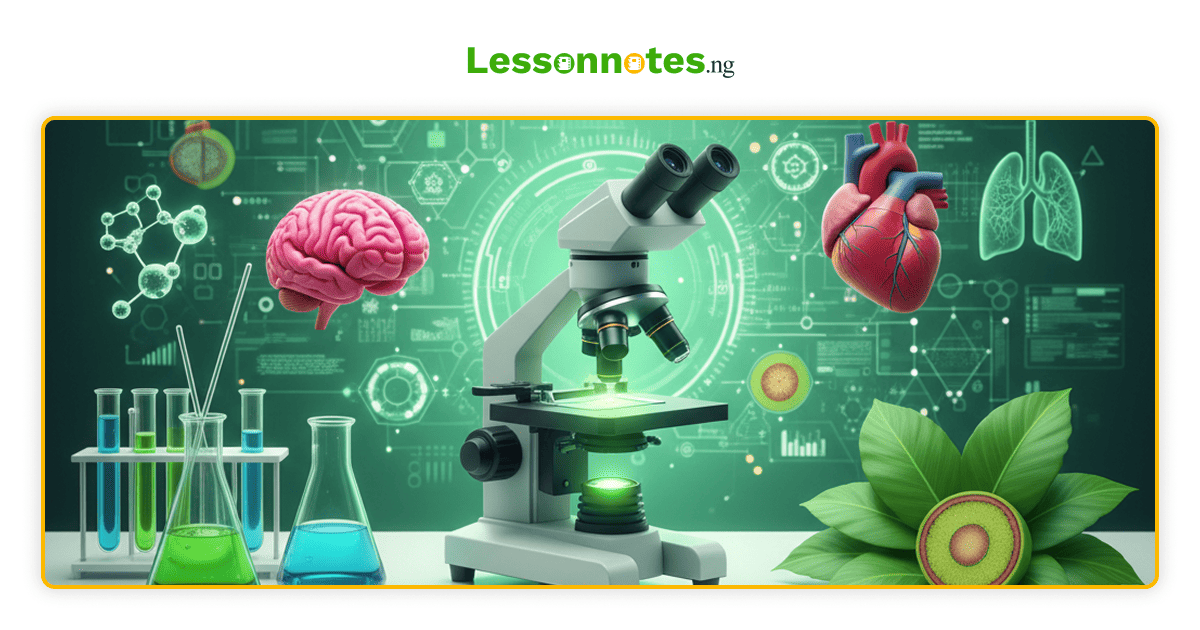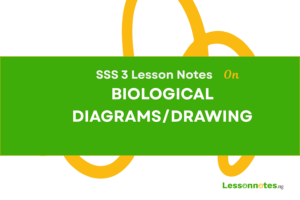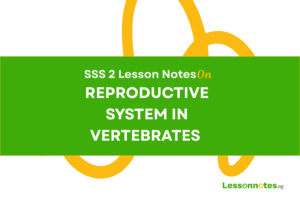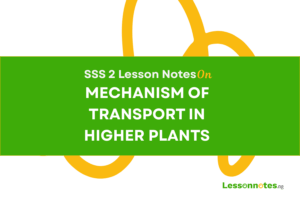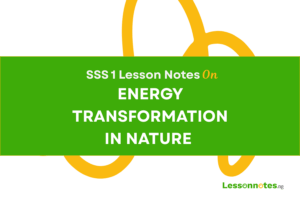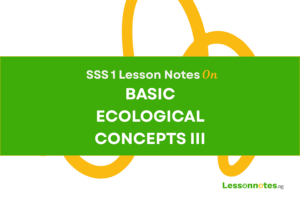Spelling Drills of Biological Technical Terms SS3 Biology Lesson Note
Download Lesson Note
Lesson Notes
Topic: Spelling Drills of Biological Technical Terms
Full list of words from this list:
- Abdomen: The region of the body between the thorax and the pelvis
- Abiogenesis: A hypothetical organic phenomenon by which living organisms are created from nonliving matter
- Absorption: A process in which one substance permeates another
- Activation energy: The energy that an atomic system must acquire before a process (such as an emission or reaction) can occur.
- Active transport: Transport of a substance (as a protein or drug) across a cell membrane against the concentration gradient; requires an expenditure of energy.
- Allele: Any of the forms of a gene that can occupy the same locus
- alternation of generations: The alternation of two or more different forms in the life cycle of a plant or animal.
- Anabolism: A synthesis in living organisms of more complex substances (e.g., living tissue) from simpler ones together with the storage of energy.
- Antibiotic: A substance used to kill microorganisms and cure infections.
- Antigen: Any substance that stimulates an immune response in the body.
- Appendicular skeleton: The part of the skeleton that includes the pectoral girdle, the pelvic girdle and the upper and lower limbs.
- Asexual reproduction: Reproduction without the fusion of gametes
- Atrium: A chamber connected to other chambers or passageways.
- Axial skeleton: The part of the skeleton that includes the skull and spinal column sternum and ribs.
- Bilateral symmetry: The property of being symmetrical about a vertical plane
- Bile: A digestive juice secreted by the liver
- Biomass: The total amount of living matter in a given unit area
- Biome: Major ecological community with distinct climate and flora
- Biosynthesis: Production of a chemical compound by a living organism
- Bivalve: A sea creature with two connected hinged shells
- Bone marrow: The fatty network of connective tissue that fills the cavities of bones.
- Botany: The branch of biology that studies plants
- Catabolism: Breakdown in living organisms of more complex substances into simpler ones together with release of energy.
- Catalyst: Substance that initiates or accelerates a chemical reaction
- Cell wall: A rigid layer of polysaccharides enclosing a plant membrane
- Cellulose: A polysaccharide that is the chief constituent of all plant tissues and fibres.
- Centromere: A specialised condensed region of each chromosome that appears during mitosis where the chromatids are held together to form an X-shape.
- Cerebellum: A major division of the vertebrate brain
- Cerebrum: Anterior part of the brain consisting of two hemispheres
- Chemical change: Process determined by substances’ composition and structure
- Mother cell: Cell from which another cell of an organism develops
- Mutation: A change or alteration in form or qualities
- Mutualism: The relation between two organisms that benefit each other
- Mycelium: The vegetative part of a fungus consisting of a mass of branching threadlike hyphae.
- Nervous system: The sensory and control apparatus consisting of a network of nerve cells.
- Neurotoxin: Any toxin that affects neural tissues.
- Notochord: A flexible rod like structure that forms the supporting axis of the body in the lowest chordates and lowest vertebrates and in embryos of higher vertebrates.
- Nucleus: A part of the cell responsible for growth and reproduction.
- Osmosis: Diffusion of molecules through a semipermeable membrane.
- Palaeontology: The earth science that studies fossil organisms.




